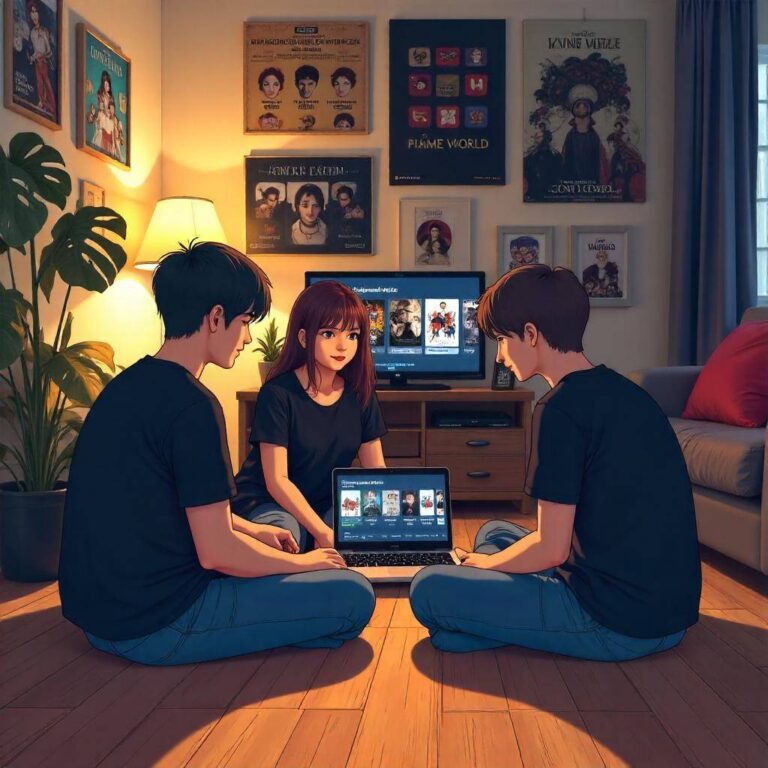Reader’s Question:
I’m wondering if the anime “City” airing this summer will be available on services like Abema or TVer. Can you let me know which platforms I can watch it on?
Understanding “City” and Its Availability
When it comes to exploring new anime during the summer season, “City” has caught the
attention of many fans looking to dive into the latest offerings. But as you might have heard, there are some concerns about where to stream the anime. According to a recent user comment, “City” will not be available on popular platforms such as Abema and TVer. Instead, it will be exclusively distributed on Prime Video, and as a fan, it’s essential to know where and how to find your favorite shows. This situation sheds light on a broader trend in the anime industry, where exclusive streaming deals are becoming the norm. In this comprehensive guide, I want to explore not only the availability of “City,” but also dive deeper into the implications of such exclusivity, the cultural significance of anime, and what makes shows like “City” resonate with viewers.
The Anime Streaming Landscape
Anime streaming has seen a significant transformation over the past decade. Gone are the days when fans would only wait for DVDs or rely on local television broadcasts. Now, platforms like Crunchyroll, Funimation, Netflix, and Prime Video have dramatically changed how we consume content. Exclusivity is a key trend in the industry. Platforms are vying for viewers’ attention by securing exclusive rights to certain titles. For instance, if you look at “City,” its exclusive availability on Prime Video indicates a strategic move to attract subscribers who are eager for new content. However, this can be a double-edged sword. While it may work in favor of the platform, it can also frustrate fans who prefer using different services. As a fan, I remember when “Attack on Titan” first aired its final season. It was available only on specific streaming services, which sparked a discussion among fans about the accessibility of anime. The general consensus was that while exclusivity can enhance a platform’s value, it can also alienate potential viewers who aren’t subscribed to that service.
The Cultural Significance of Anime
Anime is not just entertainment; it’s a cultural phenomenon that has a profound impact across the globe. The narrative styles, character designs, and themes often reflect broader societal issues, making them relatable to a wide audience. For example, shows like “My Hero Academia” and “Demon Slayer” focus on themes of friendship, perseverance, and the struggle between good and evil. “City,” while still fresh in our minds, promises to explore urban life and the complexities of human relationships, a theme that resonates well with audiences familiar with the hustle and bustle of city life. This connection to real-world experiences is what makes anime so powerful. It allows viewers to escape into different worlds while also reflecting on their own lives. As someone who has lived in both California and Osaka, I’ve found that anime often bridges cultural gaps. It has the unique ability to encapsulate the essence of Japanese life while also appealing to Western audiences. This duality is part of what makes series like “City” significant; they foster an understanding of diverse perspectives, enriching the global conversation about culture.
Character Development and Storytelling Techniques
One of the standout features of anime is its emphasis on character development. Shows like “City” often take the time to explore their characters’ motivations, backgrounds, and growth throughout the series. This depth can create a strong emotional connection between the viewer and the characters, making their journeys more impactful. For example, let’s consider a potential character arc in “City.” Imagine the protagonist struggling to balance work and family life in a sprawling metropolis. The anime could explore his daily challenges, providing viewers with a relatable experience. By showcasing the nuances of his interactions with coworkers, family, and friends, the audience can see how his character evolves as he learns to navigate his environment. The storytelling techniques employed in anime also play a crucial role in character engagement. Many shows utilize a mix of humor, drama, and action to keep viewers invested. For instance, blending comedic moments with serious themes can create a balance that resonates with audiences. This technique, often seen in manzai comedy, is especially effective in drawing out emotional responses from viewers. As a fan of both Japanese and American comedy, I appreciate how “City” might incorporate humor to address serious topics. This blend of light and heavy elements not only entertains but also encourages deeper reflections on real-life situations.
Industry Trends and Future Directions
The anime industry is constantly evolving, and it’s essential to keep an eye on emerging trends. The rise of streaming services has changed the way anime is produced and distributed. More creators are starting to embrace shorter seasons, allowing for quicker production cycles while still maintaining high-quality animation and storytelling. In addition, the increasing collaboration between Japanese studios and Western companies indicates a shift toward a more globalized approach to anime creation. This cross-cultural collaboration can lead to innovative storytelling methods and diverse character representations that appeal to a broader audience. As viewers, it’s important to support the shows we love, even if they are tied to exclusive platforms. This support helps creators continue to produce high-quality content, ensuring a vibrant future for the anime industry.
Practical Insights for Viewers and Creators
For viewers, one of the best pieces of advice I can offer is to explore multiple platforms. While “City” may be exclusive to Prime Video, don’t hesitate to check out other services too. You might find hidden gems that you wouldn’t have discovered otherwise. Additionally, engage with the anime community on social media and forums. Sharing your thoughts and experiences can lead to enriching discussions and recommendations. As someone who enjoys chatting with fellow fans, I’ve often stumbled upon shows I never would have watched otherwise just by being part of the conversation. For creators, consider the importance of diverse perspectives in storytelling. Embrace the uniqueness of your background and experiences to craft narratives that resonate with a wide audience. Remember that authenticity shines through, and your voice can enrich the anime landscape. Lastly, don’t be afraid to experiment with different genres and styles. The beauty of anime lies in its versatility. Whether you’re creating a slice-of-life story like “City” or an action-packed epic, find ways to incorporate elements that make your work stand out.
Conclusion: Celebrating Anime and Its Community
As we journey through the world of anime, shows like “City” offer us a unique lens into the intricacies of life, relationships, and culture. While the exclusivity of platforms may present challenges, it also underscores the importance of supporting creators and engaging with the community. Anime is more than just a form of entertainment; it’s a shared experience that connects us across borders. So, as you dive into “City” on Prime Video, I encourage you to reflect on the themes, appreciate the character development, and engage with fellow fans. And hey, if you have any memorable or funny experiences related to anime, don’t hesitate to share them! After all, that’s what makes our community vibrant and exciting.



